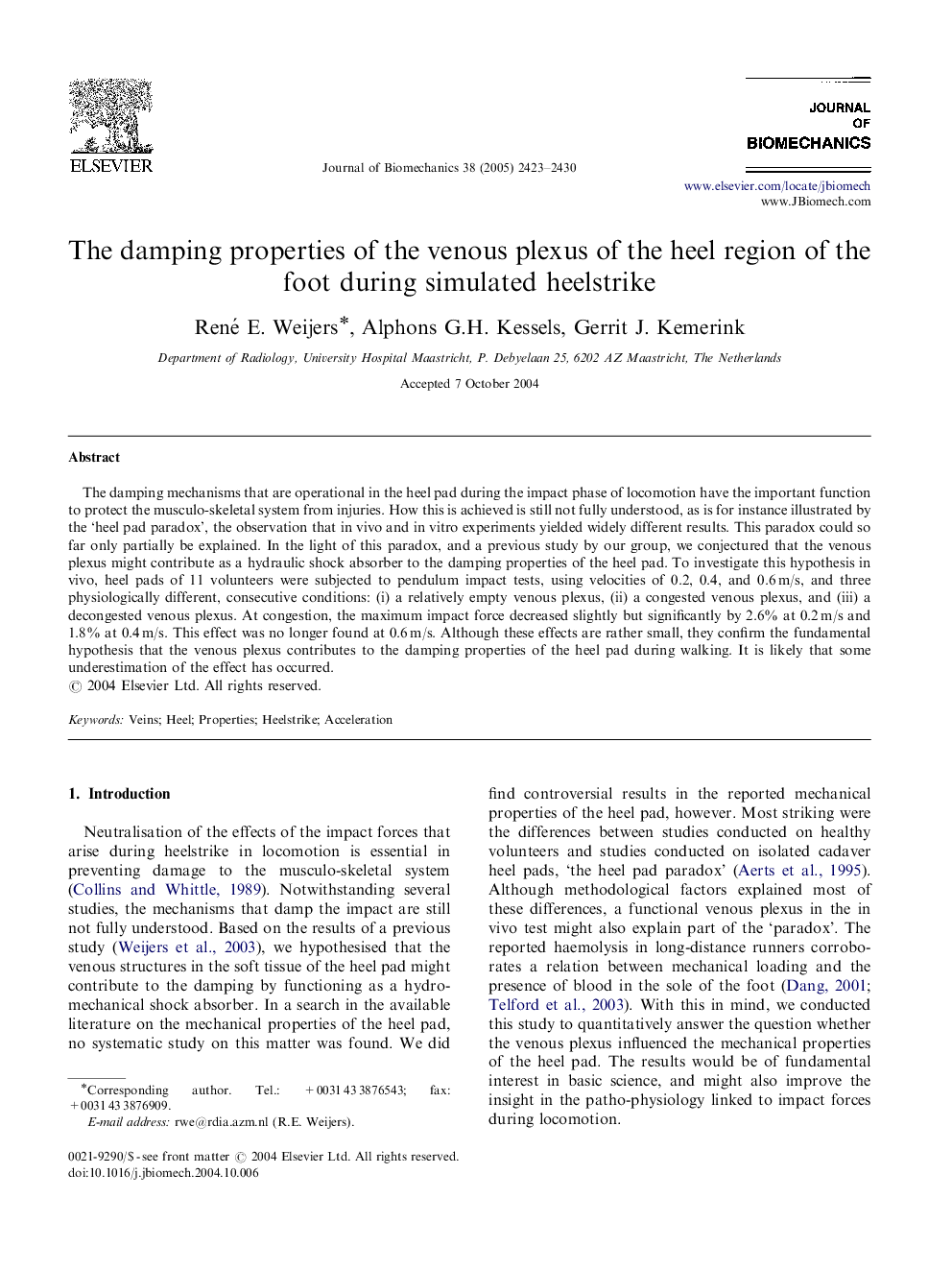| Article ID | Journal | Published Year | Pages | File Type |
|---|---|---|---|---|
| 875217 | Journal of Biomechanics | 2005 | 8 Pages |
The damping mechanisms that are operational in the heel pad during the impact phase of locomotion have the important function to protect the musculo-skeletal system from injuries. How this is achieved is still not fully understood, as is for instance illustrated by the ‘heel pad paradox’, the observation that in vivo and in vitro experiments yielded widely different results. This paradox could so far only partially be explained. In the light of this paradox, and a previous study by our group, we conjectured that the venous plexus might contribute as a hydraulic shock absorber to the damping properties of the heel pad. To investigate this hypothesis in vivo, heel pads of 11 volunteers were subjected to pendulum impact tests, using velocities of 0.2, 0.4, and 0.6 m/s, and three physiologically different, consecutive conditions: (i) a relatively empty venous plexus, (ii) a congested venous plexus, and (iii) a decongested venous plexus. At congestion, the maximum impact force decreased slightly but significantly by 2.6% at 0.2 m/s and 1.8% at 0.4 m/s. This effect was no longer found at 0.6 m/s. Although these effects are rather small, they confirm the fundamental hypothesis that the venous plexus contributes to the damping properties of the heel pad during walking. It is likely that some underestimation of the effect has occurred.
